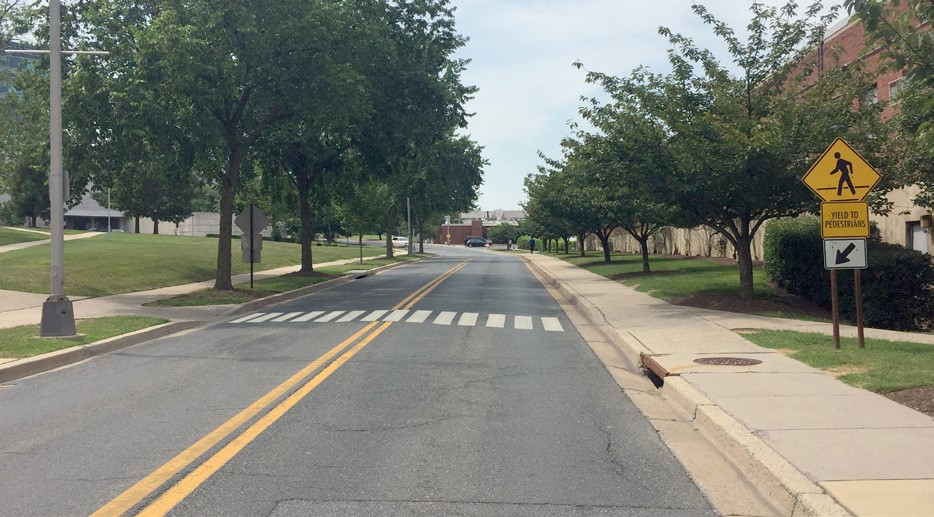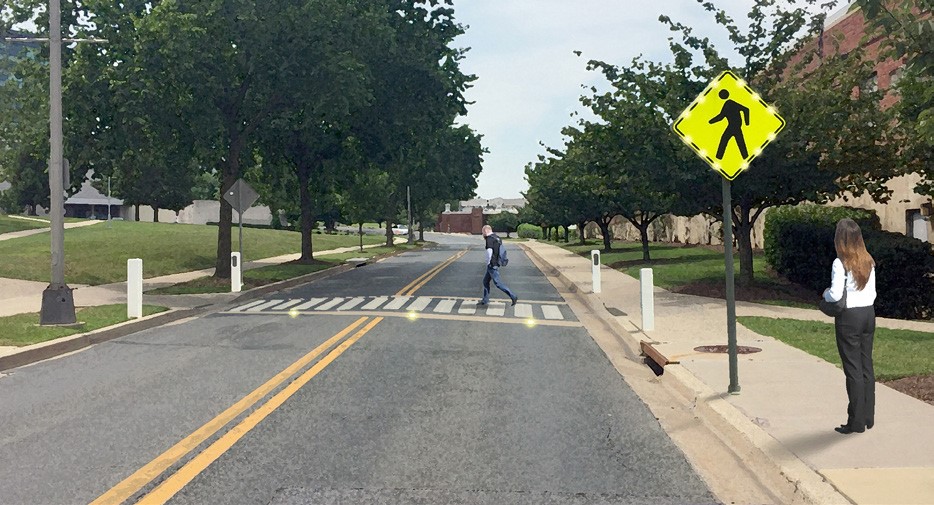Page Content


| Before improvements (above) |


| After improvements (above) |
Improving Campus Pedestrian Safety through Technology
To address pedestrian safety, NIH has already begun to install the latest safety measures campus. NIH, as well as many other places are also adopting this pedestrian safety technology.
In the summer and fall of 2018, 12 additional crosswalks will be upgraded around campus with 8 more planned for the future. The locations were determined with NIH community input, selecting places with high-volume vehicle traffic, high-volume pedestrian traffic or both.
Design and Construction
Using photo-electric sensors and directional infrared light, pedestrian-activated, LED-lit crosswalks and flashing warning signs are typically in the middle of a block where there is no stop or yield sign. Once activated, the in-road lighting is directed at the eye level of motorists and cyclists, alerting them to pedestrians already in the crosswalk and increasing drivers' warning times.
No road closures are expected. Lane closures are limited to nights and weekends and at least one lane of traffic will be open at all times.
History: Since 2014, 8 pedestrians and 1 bicyclist have been struck by vehicles on the Bethesda campus. These improvements will make the campus safer for the approximately 25,000 people who visit or work at the campus each day.
For Design and Construction information, contact Michael Oppelt, 301.435.7827 michael.oppelt@nih.gov